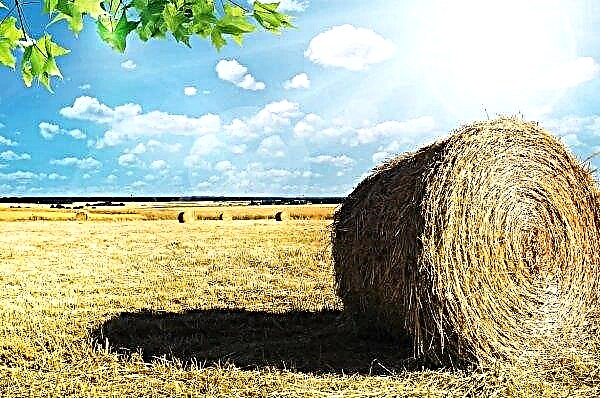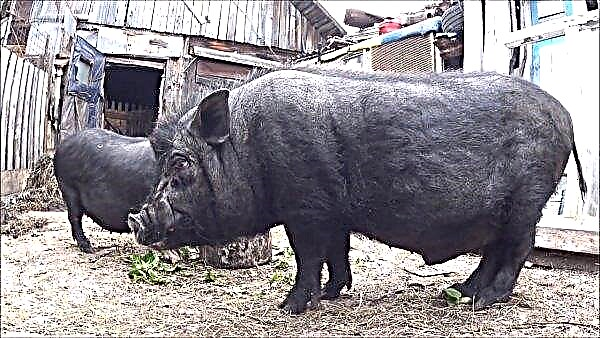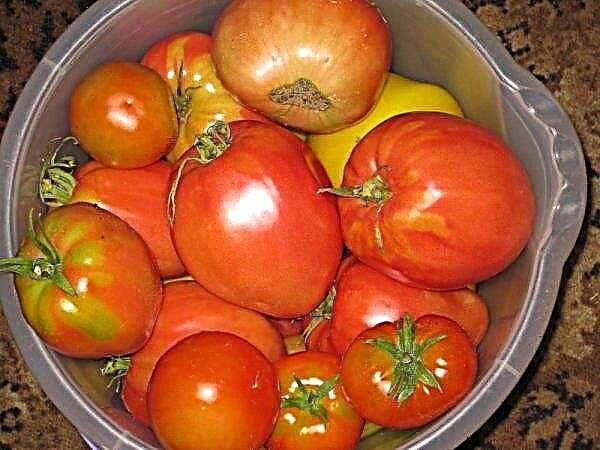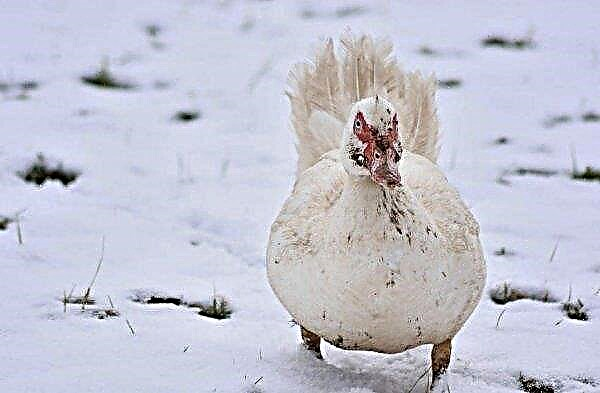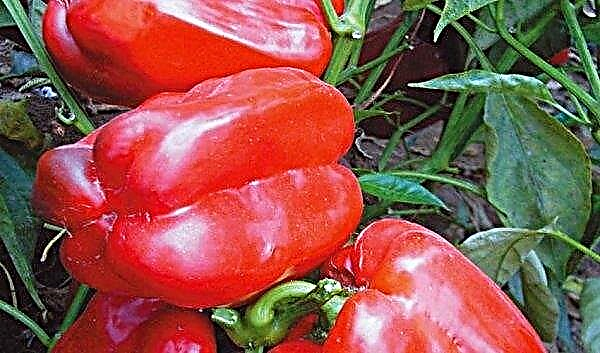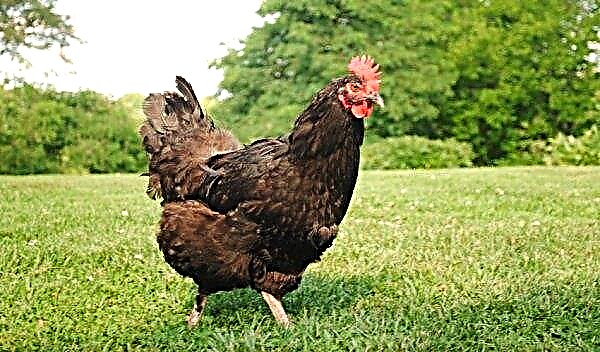Beets - a favorite product of the Slavic peoples. From time immemorial, on the basis of this root crop, dressings for first courses, salads and main dishes are being prepared. This vegetable does not need special growing conditions, so every housewife tries to grow a good beet crop so that it can be harvested for the future. And how to maintain these reserves for a long time - we will tell in today's article.
The best varieties of beets for storage
Many housewives harvest any beets for the winter, and then complain that they don’t lie for a long time even in a cold room. The reason is that each variety of this root crop has its own shelf life. And if you stock up on early varieties, it is unlikely that they will lie with you until the next harvest. It is more profitable to store mid-ripening and late-ripening beet varieties for winter storage.
These include:- Renova;
- Mulatto;
- Late winter A-474;
- Libero
- Egyptian flat;
- Bordeaux-237;
- Salad;
- Single shoot;
- Incomparable A463;
- Pablo F1;
- Cold resistant 19;
- Detroit;
- Boltardi;
- Mushroom flat A473.

Harvesting and preparing the crop for storage
In order for the crop to be stored for a long time, you should not only choose a variety suitable for storage, but also carefully prepare the root crops. You must also be able to properly harvest.
Many gardeners believe that there is nothing special about picking beets. It is quite simple to remove it: pulled the green "little forelock" - and pulled the root crop out of the ground. But it is precisely this simple and familiar to most action that can injure the skin of the root crop on dry ground. And such beets will already lose their indicators of keeping quality. Therefore, it is necessary not to pull it out, but to dig it out with a shovel or pitchfork. Harvest must be carried out in dry cloudy weather and always before the onset of frost.
Important! Even if the harvest is carried out in dry weather, the root crops must be dried. This can be done in the open air, if precipitation is not expected (leave for a couple of hours), or in a room with good ventilation (2-3 days, or even 1 week).
After drying, the primary processing of beets. It is cleaned of dirt, cut off the tops, side roots are removed, and the main root is cut to a length of 5-7 cm. If its length is not much longer, then you can not cut it. Water cannot be used to clean root vegetables, as this will worsen their stamina.
Then beets must be sorted out. Whole, healthy root crops about 10-12 cm in diameter should be sorted. Such beets will be stored best. The rest are sent for processing.

Optimal conditions for storing beets
You need to store the root crop in a dark, cool place with a temperature of 0–2 ° C and good ventilation. Humidity should be around 90–92%. If the temperature drops below zero, the beets will freeze and begin to deteriorate faster. An increase in temperature above 4 ° C will provoke the appearance of tops and softening of the root crop. Therefore, you need to be able to provide ideal conditions for storing the vegetable at least in the first 2 months.
Important! In order for air masses to circulate around beets naturally, they must be folded at a height of 15 cm from the floor.
How and where to store beets in an apartment
The ideal place to store beets, in which you can maintain optimal conditions, is a cellar or basement. But if there is no such room, do not worry, since you can store this root crop in the apartment. About it further.
In fridge
Some housewives put the beets in the refrigerator. It is dark, high humidity and low temperature. But in the refrigerator, the root crop can be stored for only a month, and then it will begin to lose nutrients and moisture.

If this storage duration is suitable for you, then check out some recommendations:
- Beets can be stored in the refrigerator in a bag with vents, but only peeled vegetables and unwashed ones need to be packed in them.
- A more rational option would be to use a vacuum bag. It will allow you to slightly extend the shelf life. Root crops should be washed, tops removed, immerse vegetables in saline, and then immediately pack in a bag.
- It is possible to use foil to store the crop. Each fetus needs to be wrapped in it, and they will be able to lie about 3 months.
- Storage in a vacuum container for 1 month is acceptable.
In the pantry or on the balcony
If you have collected a lot of root crops and there is no place for them in the refrigerator, you can send the vegetables for storage to the pantry or to the balcony. They are stacked in wooden boxes and boxes. The bottom of the container, as well as the layers of the fruit, is poured with sand or salt - they will absorb excess moisture and prevent the development of fungal diseases. Some use sawdust, wood ash, fern leaves to distinguish. The most important thing when laying is that the root crops do not contact each other.
In wooden boxes or in bags you can store beets and potatoes. These vegetables are perfectly adjacent: beets are able to absorb excess moisture, thereby saving potatoes from the appearance of rot.
Important! Vegetables should be laid out in alternating layers so that the largest fruits are on top and the smallest ones on the bottom.
Storage of beets in the cellar or basement
Those who live in a private house or own a summer cottage with a house, have the opportunity to harvest in the basement or cellar and do not particularly bother with the storage of root crops. But here still has its own nuances. Even if the desired temperature is maintained in these rooms, the vegetable may not last until the new crop.
You need to know some more rules for storing beets:
- In the cellar or basement must be air circulation.
- Fruits will be better cooled and ventilated if placed at least 15 cm from the floor.
- You can, of course, store beets in bulk in the cellar, but under it you must spread oilcloth.
- If you are going to store these vegetables in boxes and next to potatoes, then it is better to place the containers on the racks in this order: potatoes below, beets on top. There is another option: all in one box, the sequence of layers is the same.
- For better preservation of root crops, they should be sprinkled with chalk, ash, sand, peat, clay, sawdust or salt. In the sand (calcined) beets can be buried completely. Pour the salt over the vegetables, or dip the root crops in saline and dry them. They are mixed in boxes with fern or mountain ash foliage. To keep beets in clay, you need to dilute an aqueous solution of fatty clay with a creamy consistency. Root crops are dipped into it, dried and dipped again.
- You can store these vegetables in plastic bags., they can accommodate about 40 kg of beets. Bags are placed on the floor on wooden coasters or bricks.
Did you know? Beets as a medicinal and vegetable plant got into the culture in the II millennium BC. e.
Overhead storage
Burt is a type of storage, which can be just a bunch of root crops on the field, or a dug shallow foundation pit (0.4–0.5 × 3-4 × 50 m, (G × W × D)) with a moat along the contour, covered with peat or straw. If digging a pit, then a ventilation trench 40 × 40 cm must pass along its bottom. It is laid with brushwood. In the center of the excavation pit, 30 × 30 cm exhaust manholes made of reeds or coffin are connected to the ventilation trench.
In the prepared storage, the beets are stacked dry, cleaned of dirt and without tops. Her top should look up. They cover the vegetables with straw, a layer of 30–40 cm. From the bottom, the straw is 2/3 covered with soil 15–25 cm. When the temperature is below zero, more earth should be added.

Harvesting for the winter
For the winter, many housewives prefer to cook beets from beets, rather than store it in its entirety.
Freezing
Freezing is a practical but not very suitable way of storing a vegetable, because when it is frozen it loses a number of its positive qualities.
You can freeze both raw and cooked products. It must be whole, strong, without flaws, maroon and not very large.Preparation should be carried out as follows:
- Trim the tops completely, leave the tail partially.
- Wash root vegetables with a brush.
- Peel and wash the washed vegetable.
- Ready root crop to dry on paper towels.

There are several ways to freeze:
- Cut the product into strips, cubes, slices and arrange in small bags for freezing. Tie the package or seal it.
- If you want the slices not to form a solid lump, then they can be frozen in 2 stages. First spread the product in a thin layer on a board, cover with a film and freeze for 1-2 hours. Then pack in bags from which to remove air. Ready tied bags to send back to the freezer.
- Grate root vegetables and pack them in bags or plastic containers. Before you send the package to the freezer, you need to remove air from it, and level the contents.
Did you know? At the end of the XIX century, beets as a vegetable became known on all continents.
- Bake washed unpeeled fruits in the oven until soft. Then clean, cool, cut in any way and freeze in 2 stages (described earlier).
- Wash the washed and unpeeled beets in a pan, pour cold water and put on a fire to cook. Immerse the finished product in cold water and clean, then cut and arrange in bags or containers. Freeze in 2 steps.
Drying
Not all root crops are suitable for drying. Only homogeneous, without rings and with dark purple pulp are needed. Such fruits are possessed by the varieties Incomparable and Bordeaux.
Before drying, beets are prepared:
- Wash root vegetables with a soft sponge.
- Pour with cold water for 90–120 minutes.
- Drain and collect fresh water. Put the pot on the fire.
- Cook the vegetable for 20-30 minutes. Then cool in cold water for a quarter of an hour.
- Clean the cooled product, remove the spine and head. Then cut in any way.

Borsch billet
Introducing the recipe for borsch in the bank. It is prepared from vegetables that are unsuitable for long-term storage (with defects, but without rot).
Ingredients:
- 2 kg of beets;
- 1 kg of cabbage;
- 1 kg of carrots;
- 1 kg of sweet bell pepper;
- 1 kg of onion;
- 2 kg of tomatoes;
- 1 cup vegetable oil;
- 1 cup apple or wine vinegar;
- salt, sugar to taste.
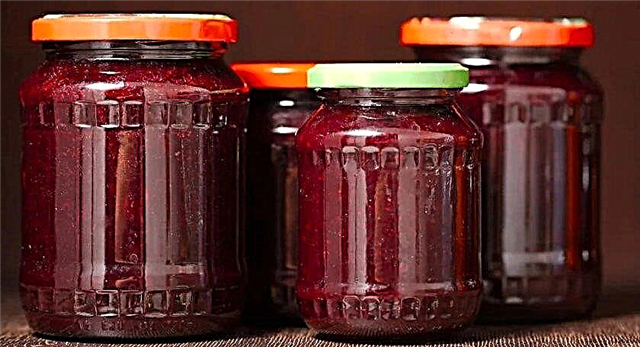
- Wash, peel vegetables. Cut the red root vegetables into strips, chop the cabbage, grate the carrots, onions, tomatoes and sweet peppers cut in any way.
- Pour vegetable oil into a metal bowl.
- Sprinkle the onion and sauté until golden brown.
- Add carrots, fry for 5 minutes.
- Pour the beets, fry until soft.
- Add bell peppers. Shuffle everything thoroughly. Fry it until soft. Stir vegetables periodically during frying.
- Add cabbage, also fry until soft. At the end, enter the tomatoes.
- Stew all vegetables for 1 hour. 10-15 minutes before cooking, add salt and sugar to the mixture to taste, vinegar.
- Sterilize the jars.
- Put the finished dressing in jars, roll up, turn over onto the lid and cover with a terry towel. Leave to cool for 10-12 hours.
Video: Cooking “borsch in the bank” for the winter
Beetroot caviar
The recipe for the preparation of delicious red root caviar.
Ingredients:
- 4 kg of beets;
- 200 g of garlic;
- 1 kg of onion;
- 1.5 kg of tomatoes;
- 60 g of salt;
- 100 g of sugar;
- 0.5 l of sunflower oil;
- 2 tbsp. tablespoons of vinegar 9%.

- Wash and peel the vegetables.
- Finely chop and fry the onions.
- Pass the beets and tomatoes through a meat grinder.
- Combine vegetables and fried onions through a meat grinder in a large bowl. Salt, sweeten, pour in vegetable oil.
- Bring to a boil and boil for 45 minutes.
- During this time, sterilize the jars in the oven, pour boiling water over the lids and pass the garlic through a crush.
- 15 minutes before cooking, add garlic and vinegar to the mixture.
- After 45 minutes, try the beets ready. If soft, you can turn off and pour caviar in banks. If not, finish.
- Close the jars with eurocaps and leave to cool, turning upside down.
Video: Harvesting beetroot caviar for the winter
Possession of information on the storage of the root crop will avoid significant crop losses and extend its shelf life. And several new recipes will complement and diversify your usual menu.





